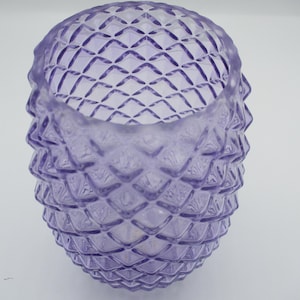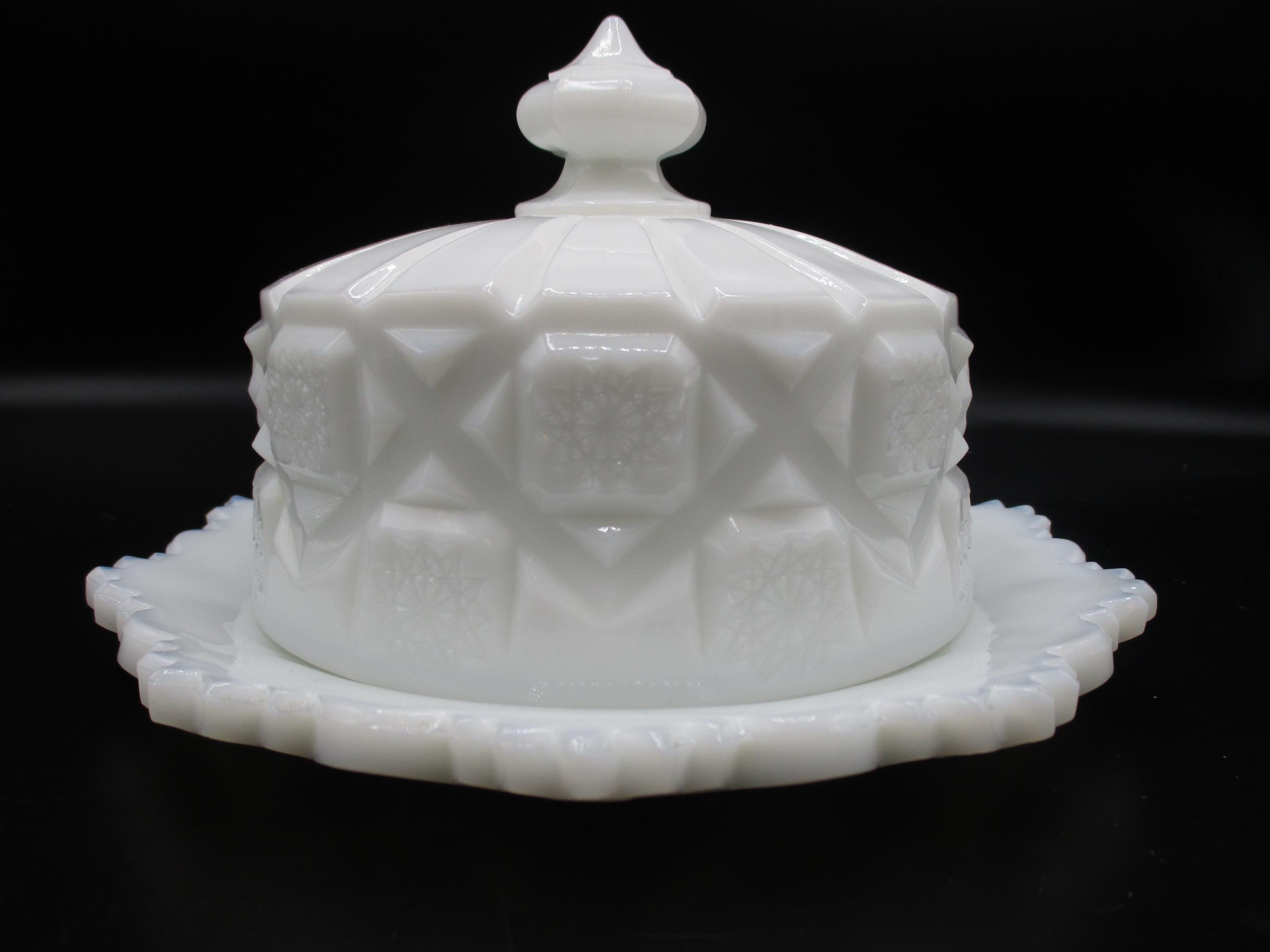
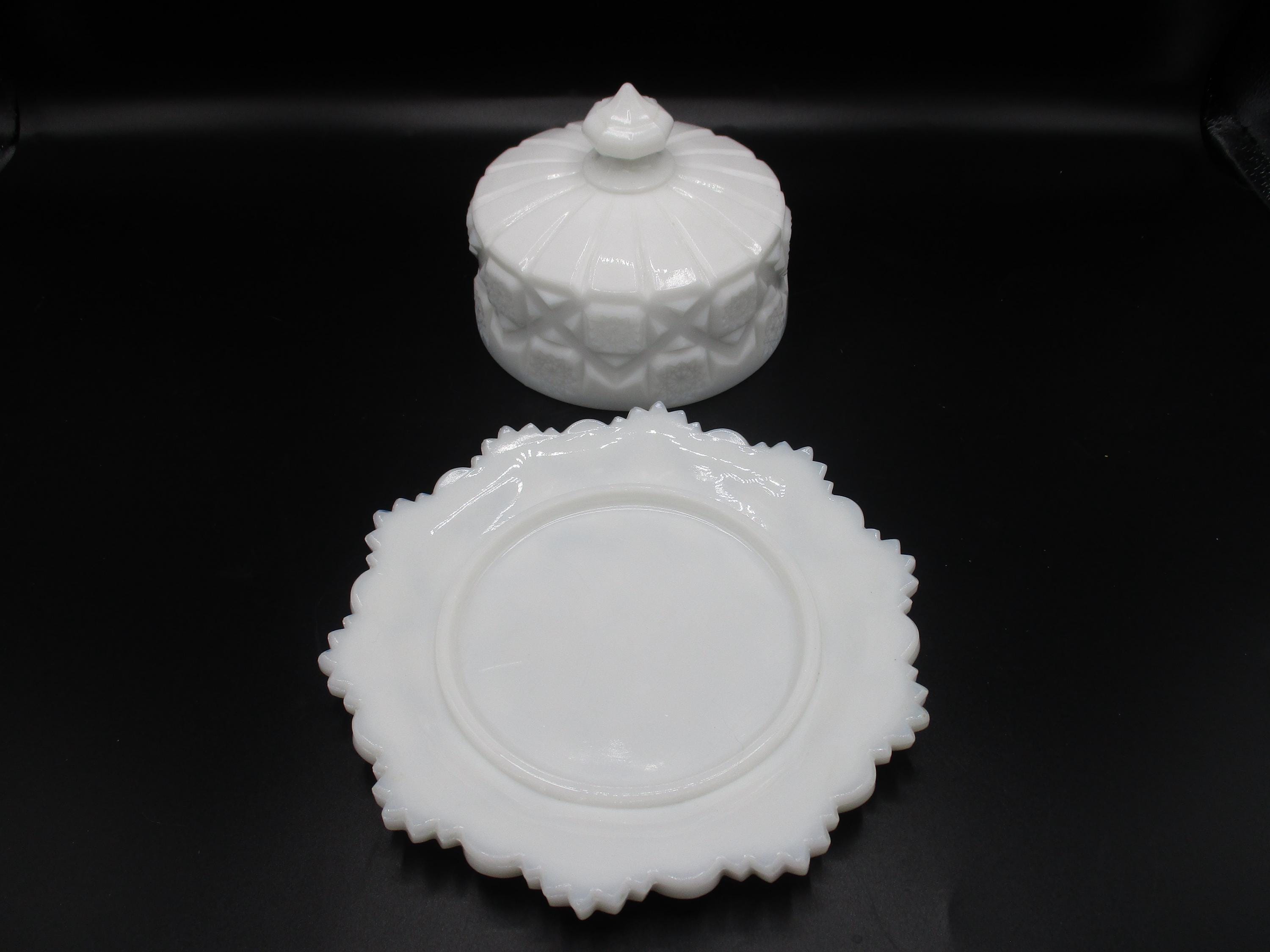
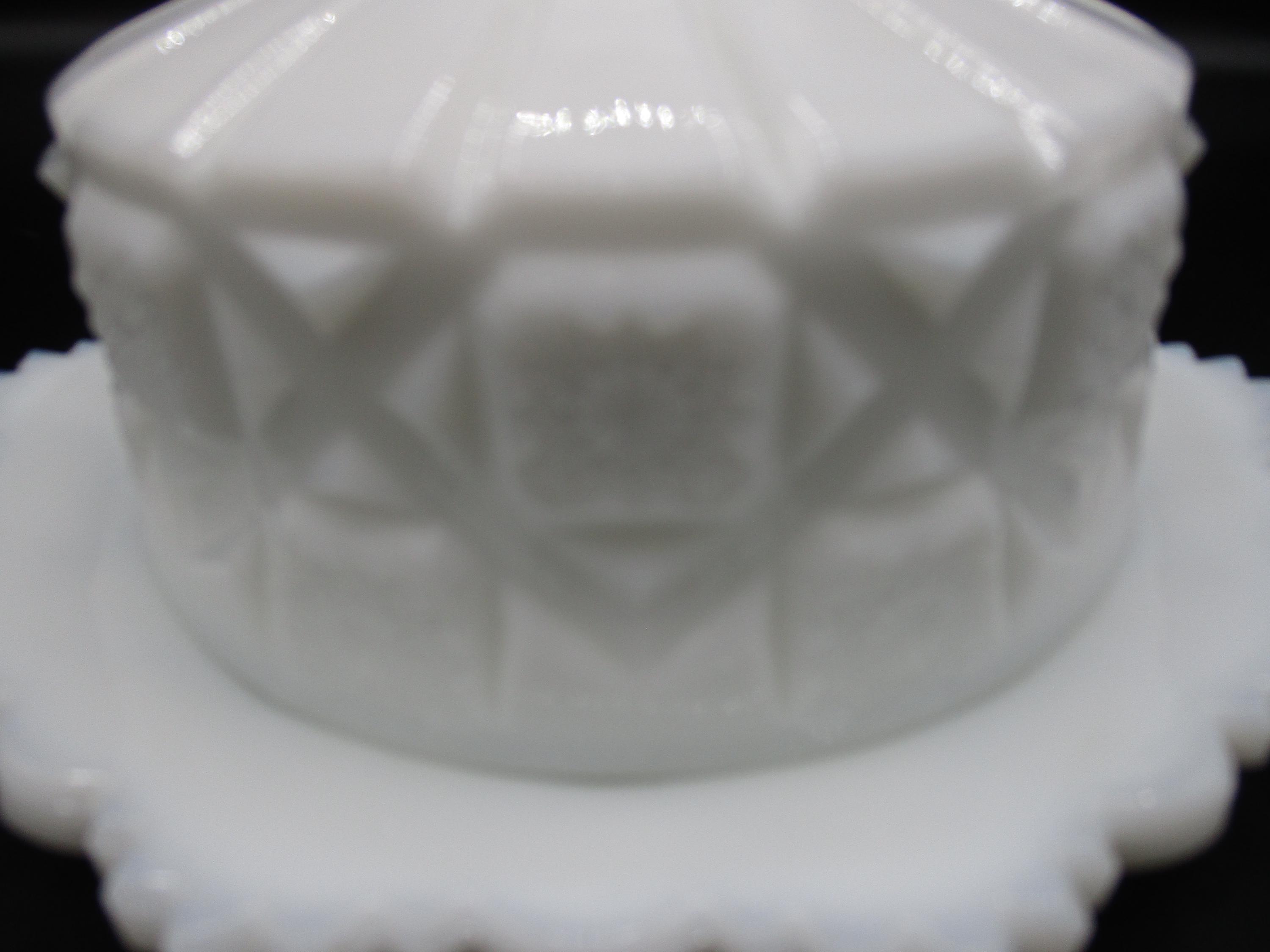



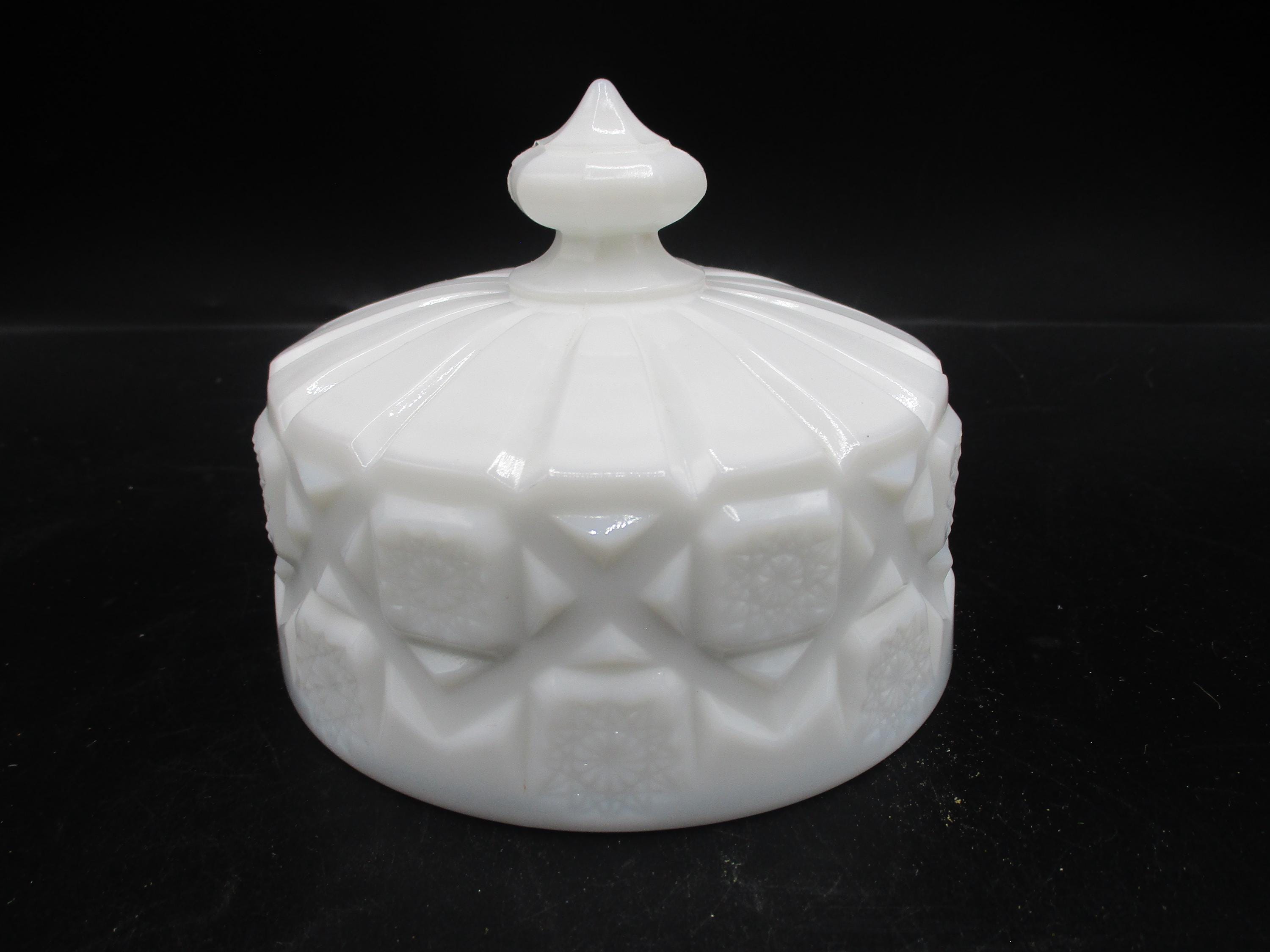
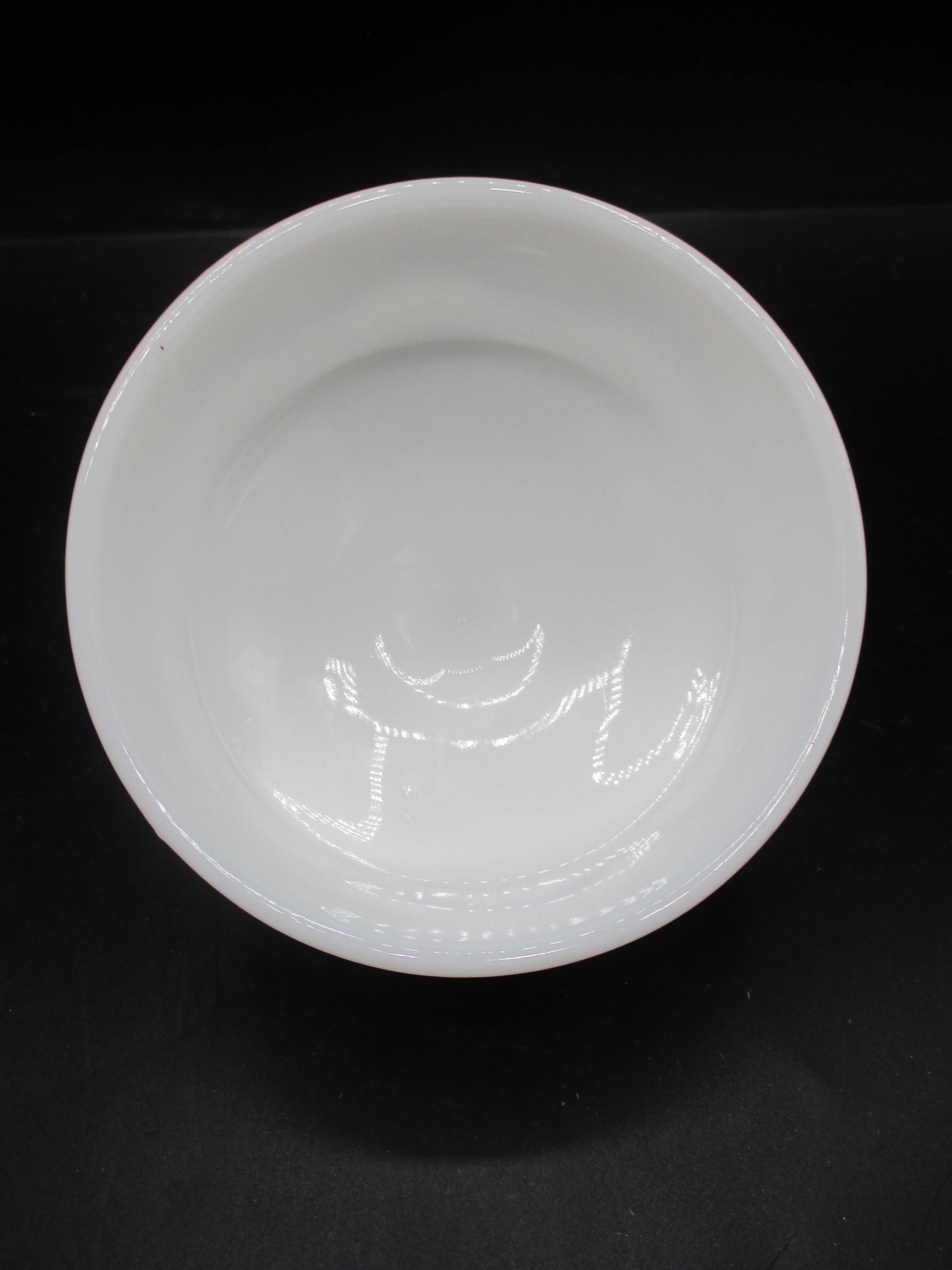
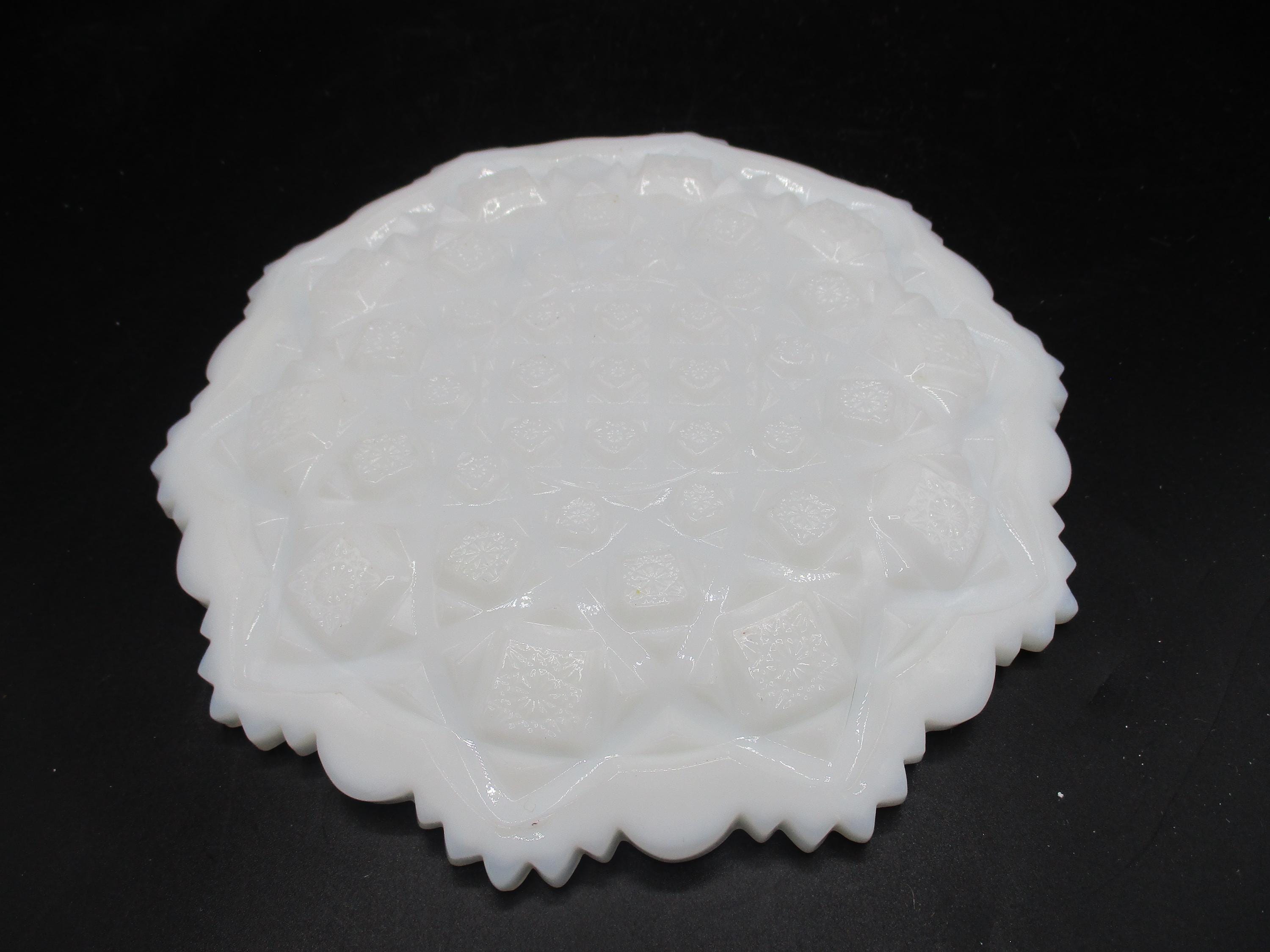
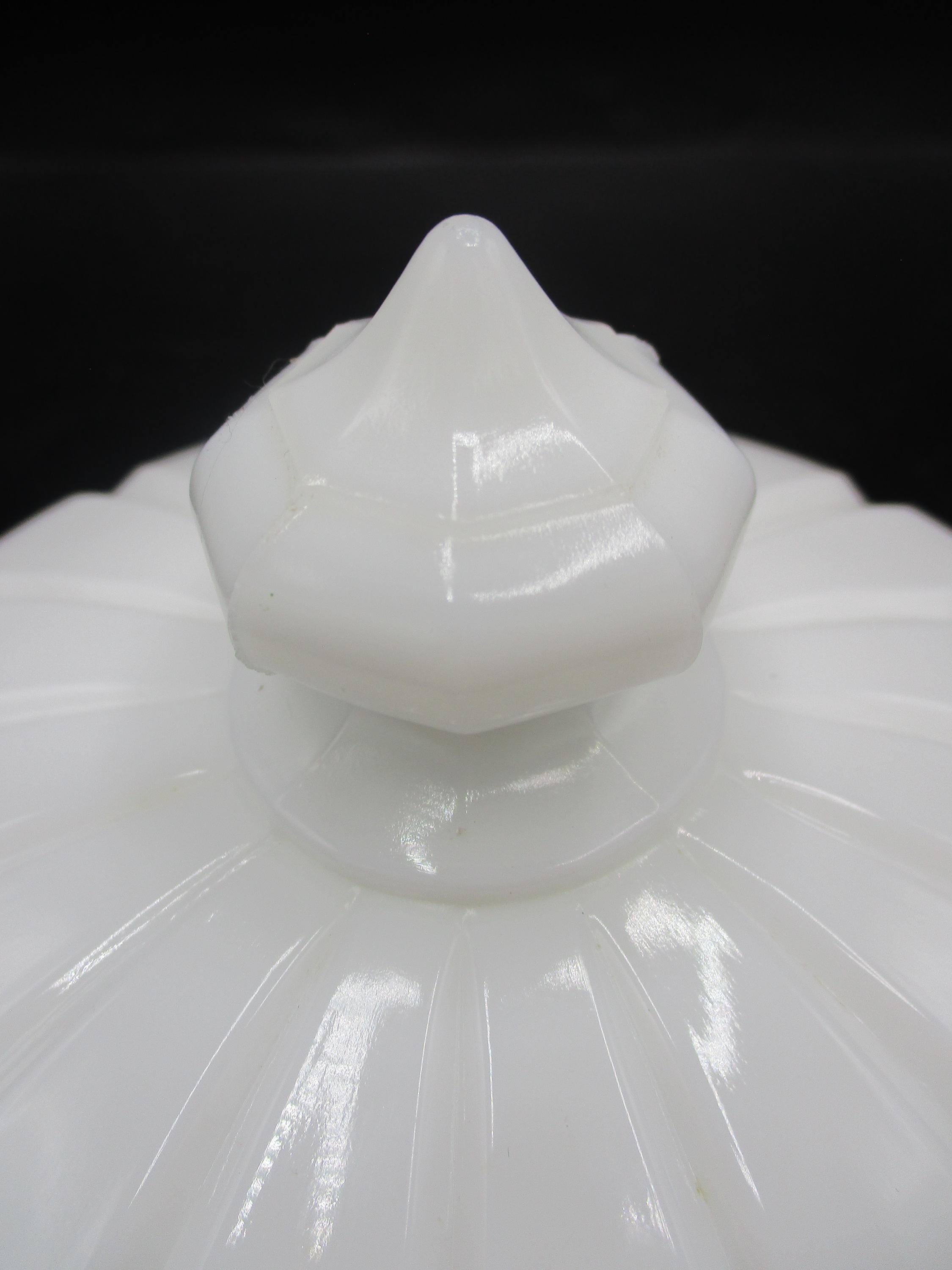
Collectible Glass
Westmoreland Milk Glass Cheese Dish-USA
$14.00
-
Details1960's-1970's Westmoreland Glass Co. Old Quilt Pattern (also known as Checkerboard) Milk Glass Cheese Dish for a 4" cheese wheel. Made in USA
The Westmoreland Glass Company was founded in 1889 when a group of men purchased the Specialty Glass Company located in East Liverpool, Ohio, and moved it to Grapeville, Pennsylvania. Grapeville was chosen as the location of the factory because the property had a large source of natural gas(needed for furnace). George West served as president of the company, while his brother Charles West was the Vice President. Ira Brainard was the primary financial backer of Westmoreland. His son J.J. Brainard was an officer in the company. Westmoreland's main production was pressed glass tableware lines, mustard jars, and candy containers. Westmoreland had its own mustard factory and tin shop on the property grounds of the factory. George West is regarded as the "Father of the Candy Container Industry" for the company's extensive production of candy containers. West Brothers was a separate company which produced the candy containers and other tinware while operating from the same factory.
In 1921, George West left the company and started his own glass company, George West and Sons. Charles West became president while J.J. Brainard became vice president of Westmoreland. The company changed its name to the Westmoreland Glass Company. Prior to his departure, George West created a large decorating department at Westmoreland. Under the direction of Charles West, the company began to make high-quality hand-decorated glass from the 1920's through the 1930's, some of which was exhibited at the Carnegie Museum in Pittsburgh, Pennsylvania.
In 1937, Charles West retired and sold his interest to the Brainard family, which took control of the glass company. In the 1940's, the Brainards phased out the high-quality hand-decorated glass and began to produce primarily milk glass.
The Westmoreland Glass Company is known for its production of high-quality milk glass, but also is known for its high-quality decorated glass. From the 1920's to the 1950's it was estimated that 90 percent of the production was milk glass. Westmoreland produced carnival glass beginning in 1908 and reissued novelties and pattern glass in carnival treatments in the 1970's. Westmoreland also produced high quality hand-decorated cut glass.
In 1980, the Brainards sold the company to St. Louis, Missouri businessman David Grossman, who had no prior experience running a large glass-manufacturing company. The company went out of business in 1984 and was sold for $75,000 to George Snyder, who converted the property into a storage facility which ended the company's run in American history.
Patterns of glass associated with Westmoreland include:
Paneled Grape
Beaded Grape
American Hobnail
Old Quilt (also known as Checkerboard)
Colonial
Floral Colonial
Wildflower and Lace
Doric (also known as Laced Edge)
Beaded Edge
Carolina Dogwood - Petals and leaves surrounding a five petal flower in the center. The mold for this was acquired by Fenton Glass who issued pieces in purple and red.
Corinth - Ribbed pattern with 12 ribs, used for vases or flattened out for bowls and plates.
Della Robbia
English Hobnail
Shell and Jewels - Early pattern used on the Victor line. This is a scarce pattern in carnival treatments.
Westmoreland was known to use primarily two marks on their products. The first company mark was a "W" found inside of a Keystone which can be found from the period of 1910 through the mid 1940's. The second company mark, which is the more commonly known by collectors and dealers, is the intertwined W and G that Westmoreland began to use in 1946 on most of the glassware. Throughout some of the 1960's, 70's and 80's the company did not always emboss the company logo in their glass products, they also applied paper stickers with the logo on several of their mass produced models and patterns. In 1981, David Grossman bought the factory from the Brainard family and changed the company mark. The new mark was the word Westmoreland in a circle around three lines. In 1984, the Westmoreland Glass Co. became a memory.
Weighs 1 lb 15 oz
Base Plate-7" X 7" Dismeter
Lid-5" X 5" Diameter
Total Height 4.5"
ETSY INTELLECTUAL PROPERTY POLICY
As a venue for artists, designers, and makers, Etsy takes intellectual property rights very seriously. We comply with intellectual property laws and industry best practices in order to maintain the integrity of our creative marketplace. This Intellectual Property Policy explains how we address allegations of infringement, how authorized parties can submit reports of infringement regarding content on our marketplace, and how Etsy sellers can respond when their listings or shops are affected by a report.
ANY COPY AND PASTING OR PLAGIARIZING OF MATERIAL
ON MEMORYLANEVINTIQUES IS SUBJECT TO ETSY INVESTIGATION AND PENALTIES!
MemoryLaneVintiques researches also protect our shop from Intellectual Property Theft by researching for violators of our material. Be respectful!
Chad & Jennifer Johnston (August 2024)
